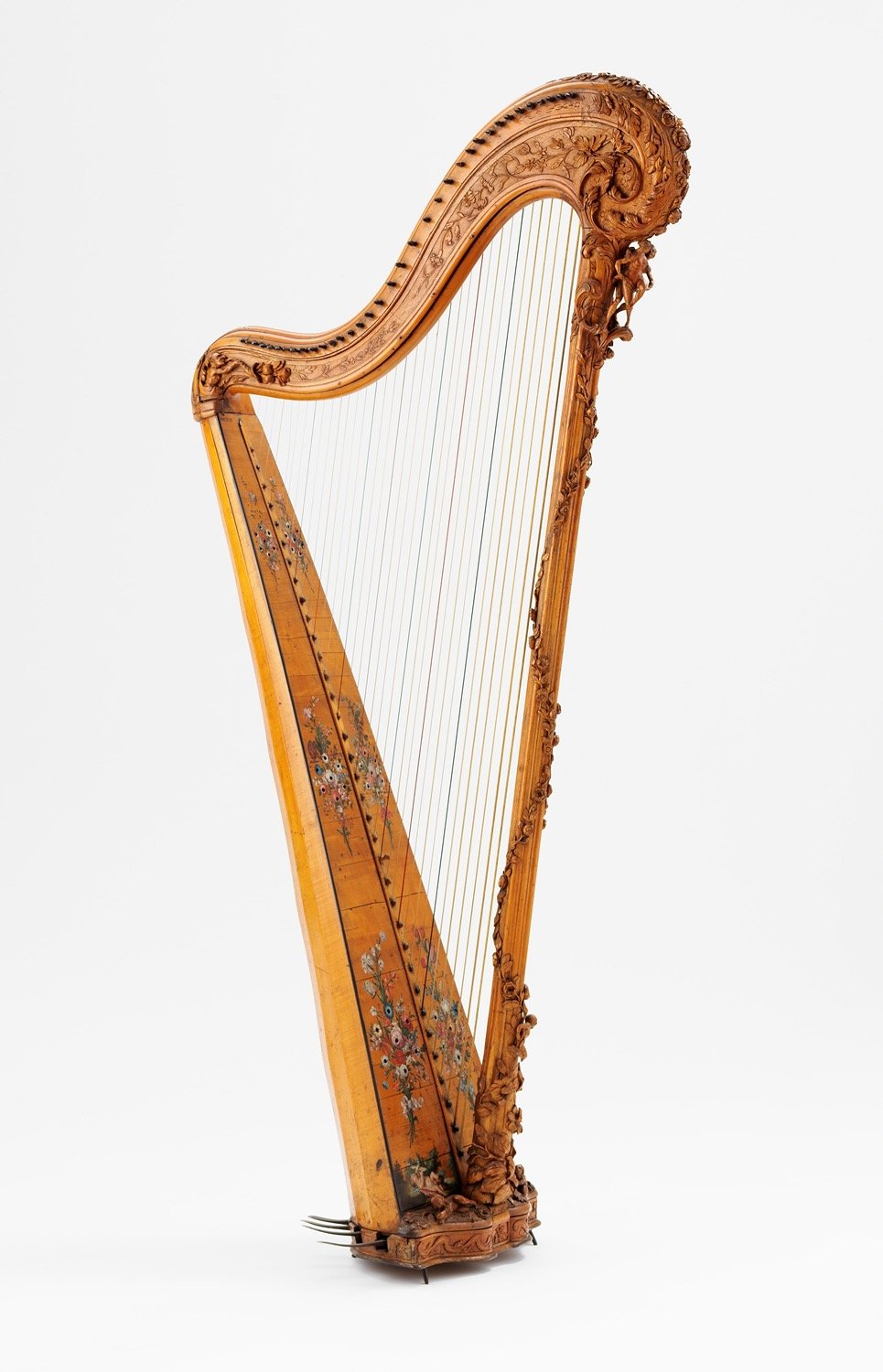Harp
Jean-Henri Nadermann
Transcription
Narrator:
From the mid-eighteenth century in Paris, a new kind of harp became the period’s most fashionable musical instrument, as National Museum curator, Cathrine Lorange, explains.
Cathrine Lorange:
And it didn’t hurt its popularity that Queen Marie Antoinette was an enthusiastic harpist.
Narrator:
To the left of this richly decorated harp, you see a portrait of the harp’s first owner, the Frenchman Louis Claude le Normand de Bretteville.
Cathrine Lorange:
With his gaze turned towards us, we encounter a man in his thirties who is presenting a carefully curated image, both socially and intellectually. He is dressed in the latest fashion. His hair is coiffed and powdered, and the books on the shelves behind him reveal his literary interests – or at least what he wants us to believe.
And he is playing the harp. Such harps were luxury items. And so, of course, Le Normand de Bretteville wanted to be portrayed with his.
Narrator:
Twenty years later, France experienced a revolution. As an officer loyal to the crown, Le Normand de Bretteville fled with his family to Denmark. His descendants continue to live in Denmark and Norway to this day.
Cathrine Lorange:
And their luggage included this portrait and the harp itself, which many years later were both donated to the museum – the portrait in 1923 and the harp in 1953.
Little did this young man know that his portrait and harp would one day be reunited as objects in a museum.